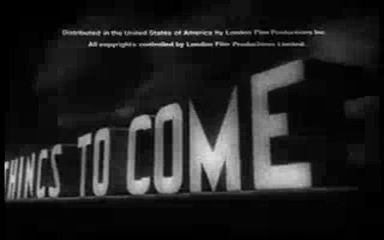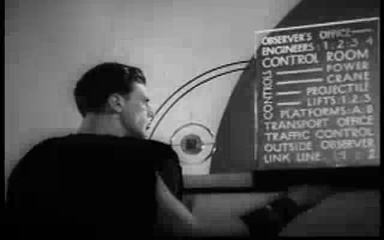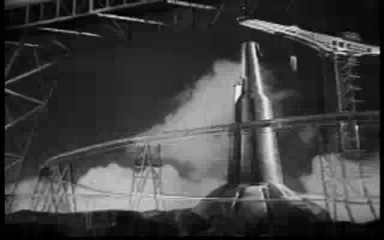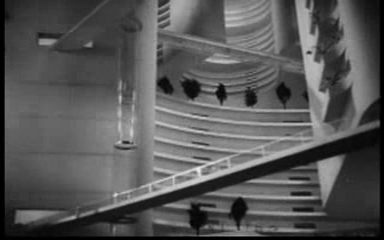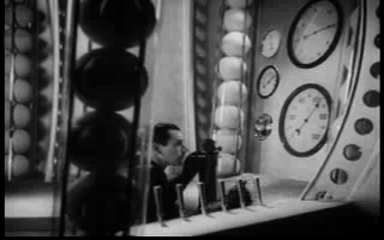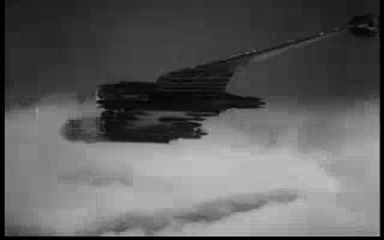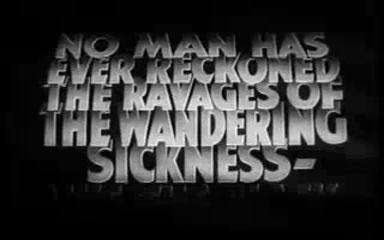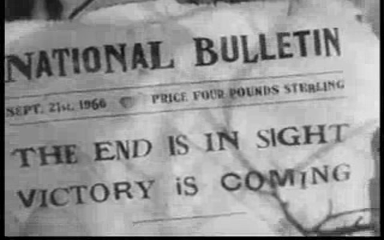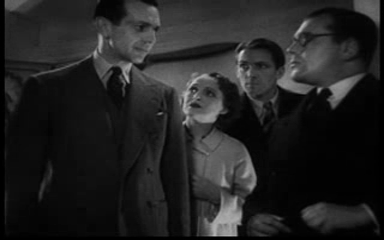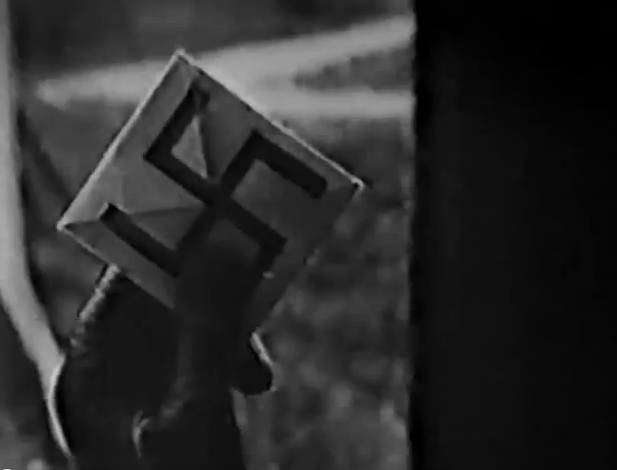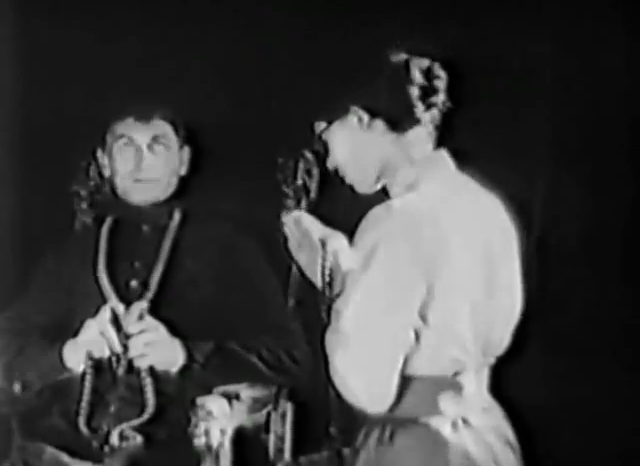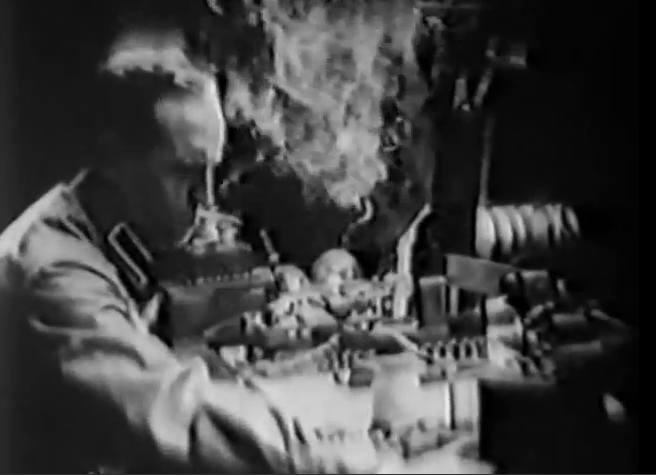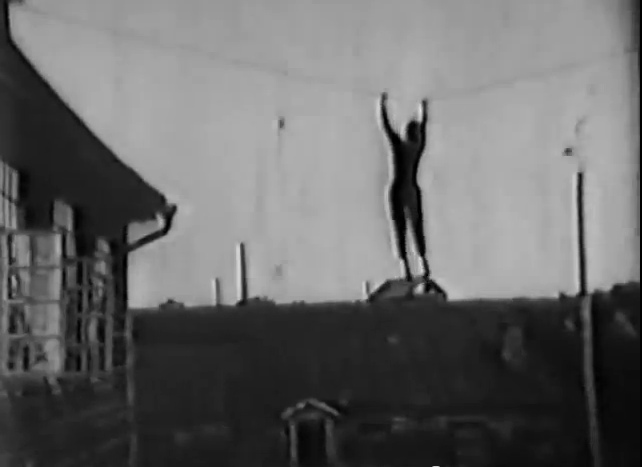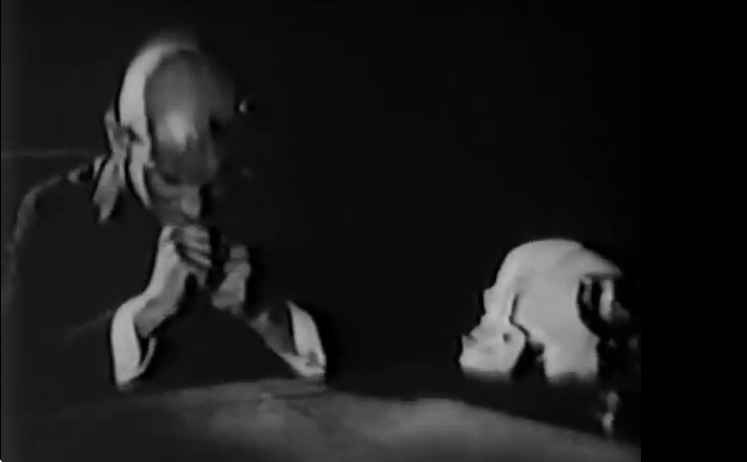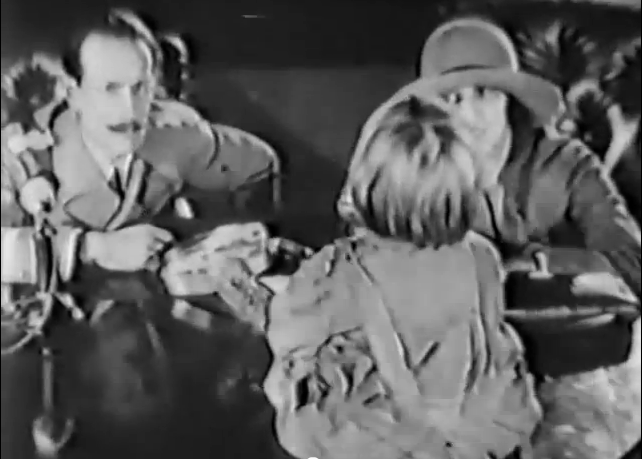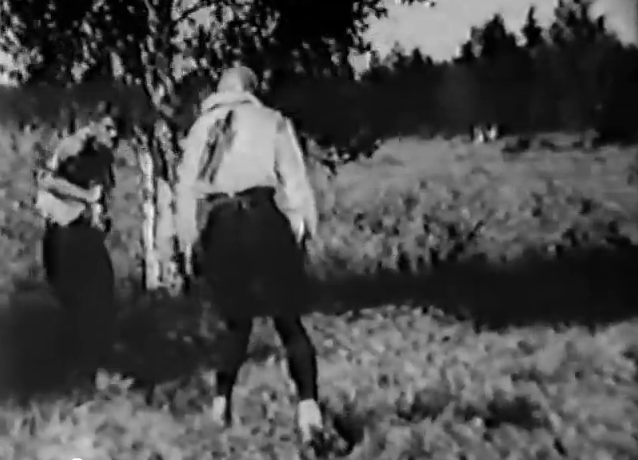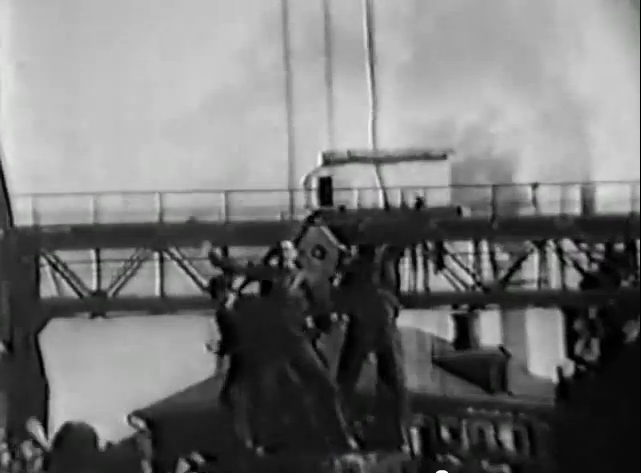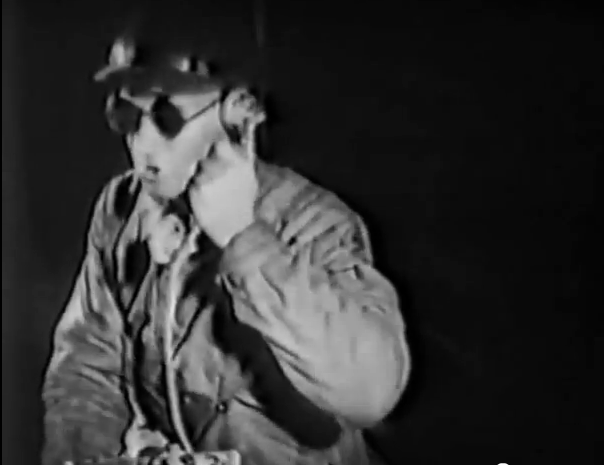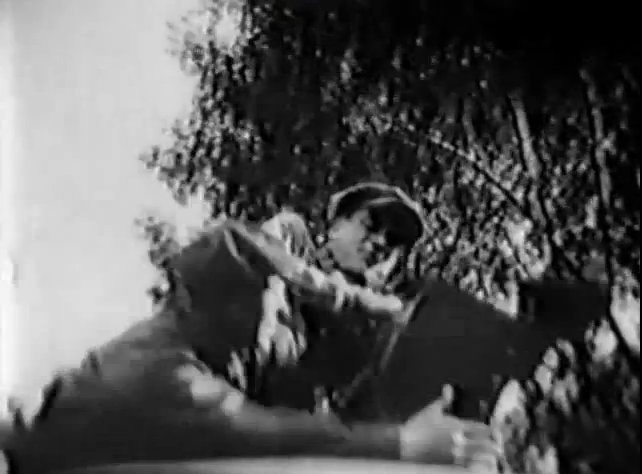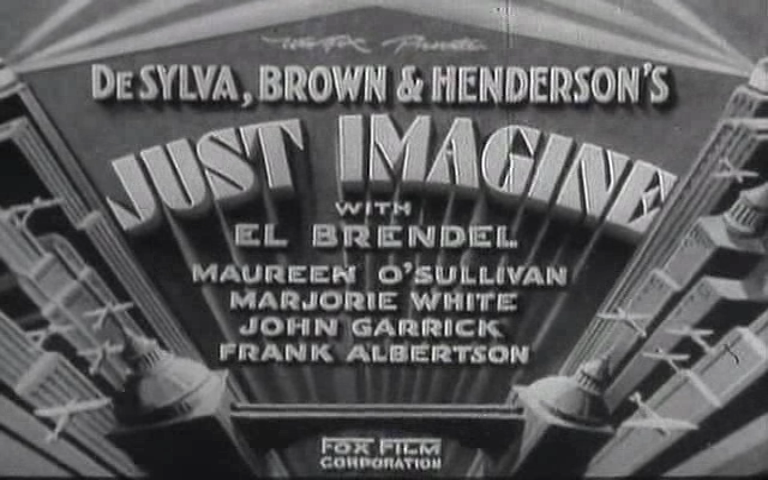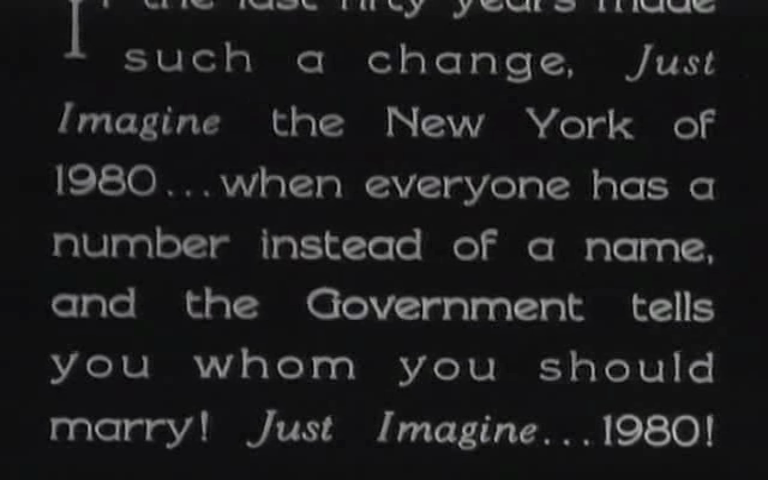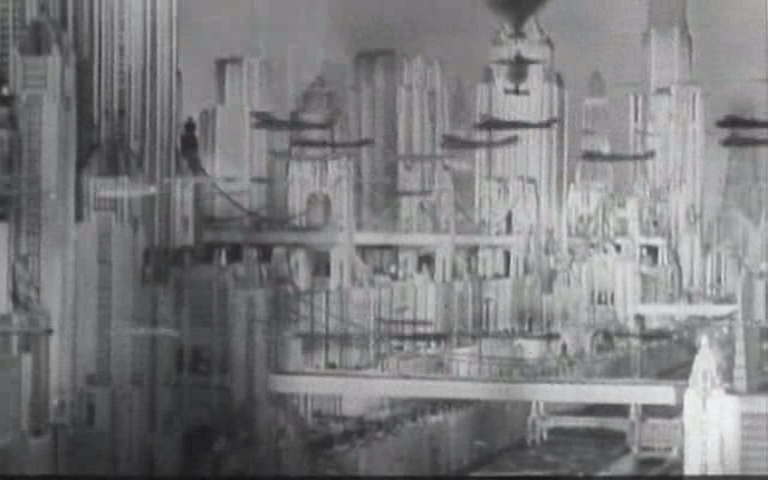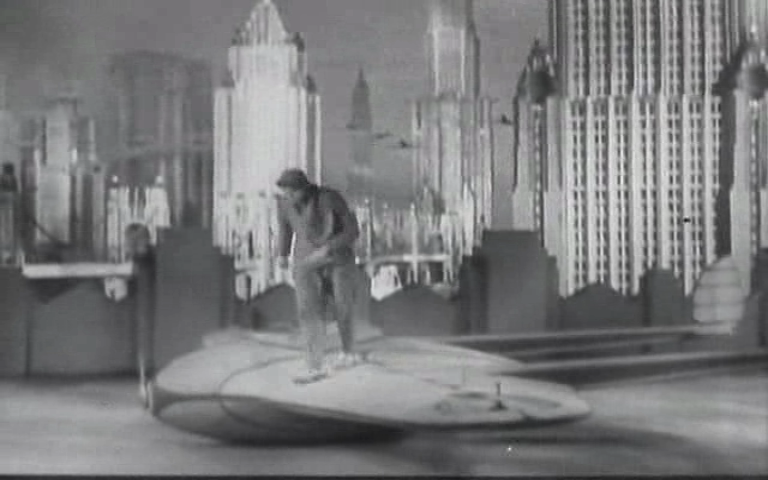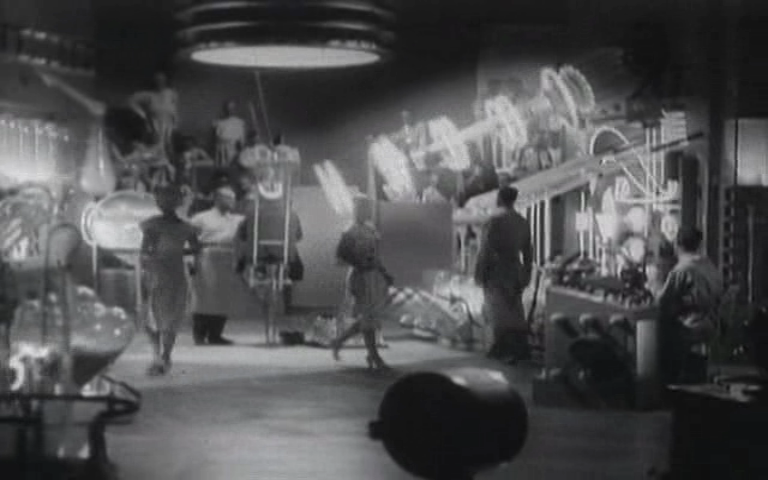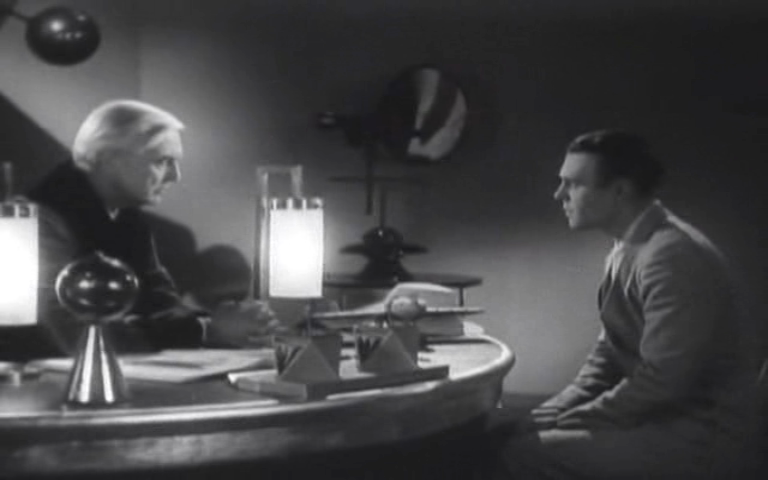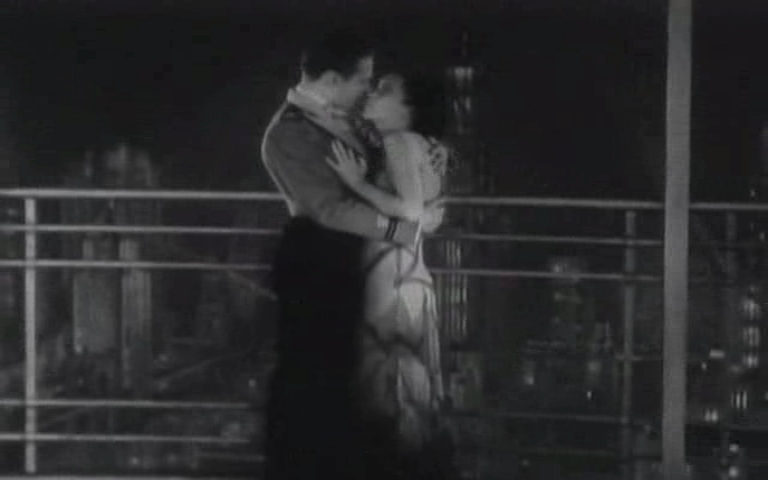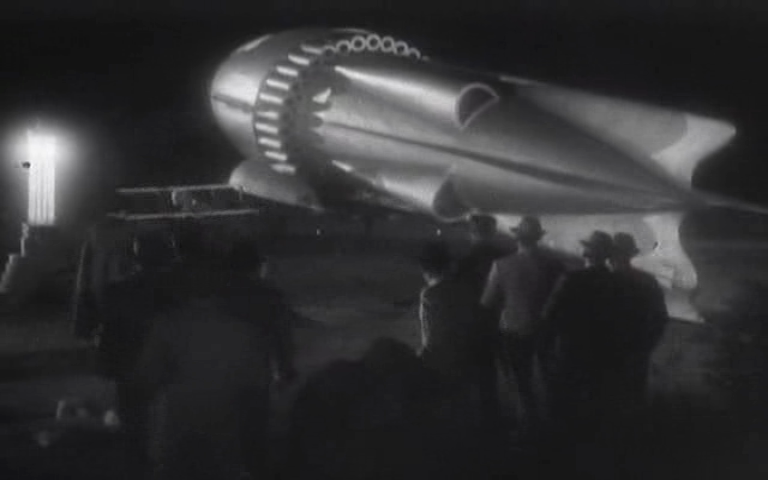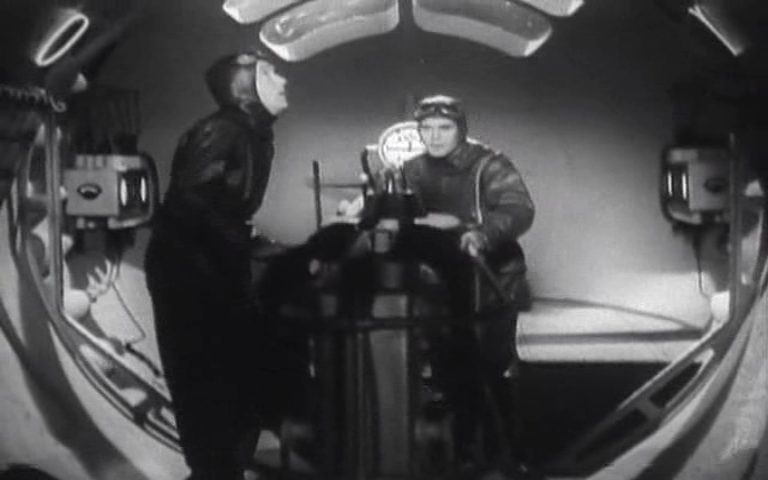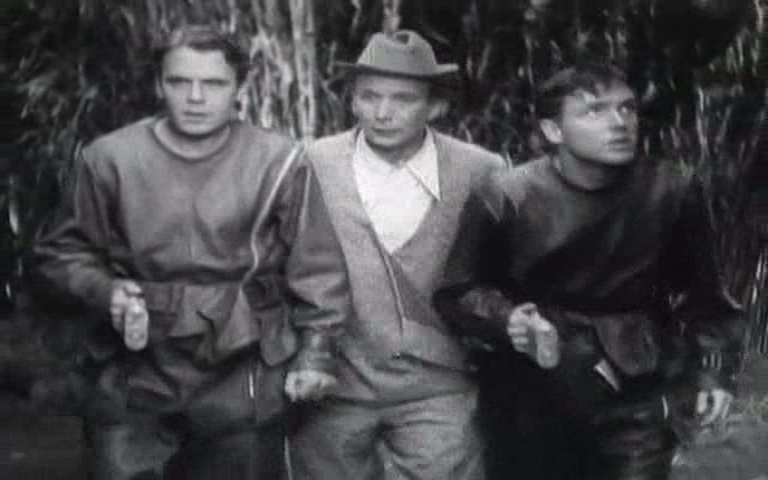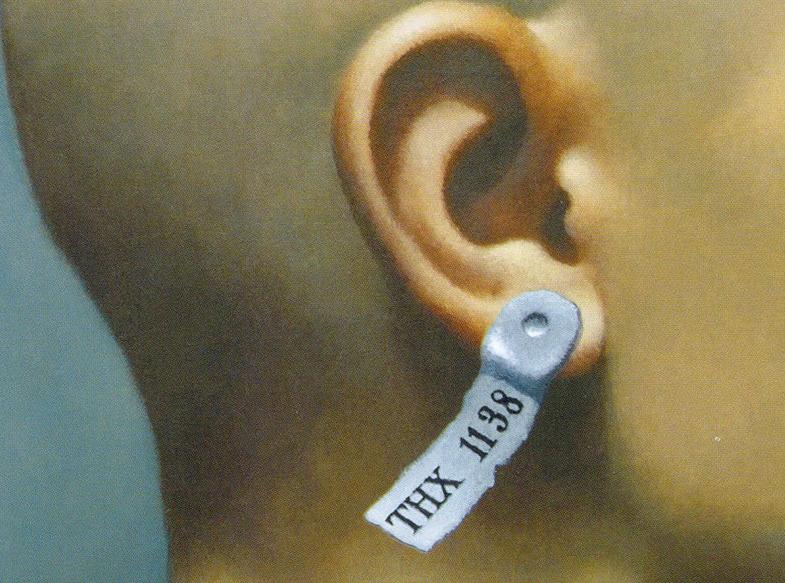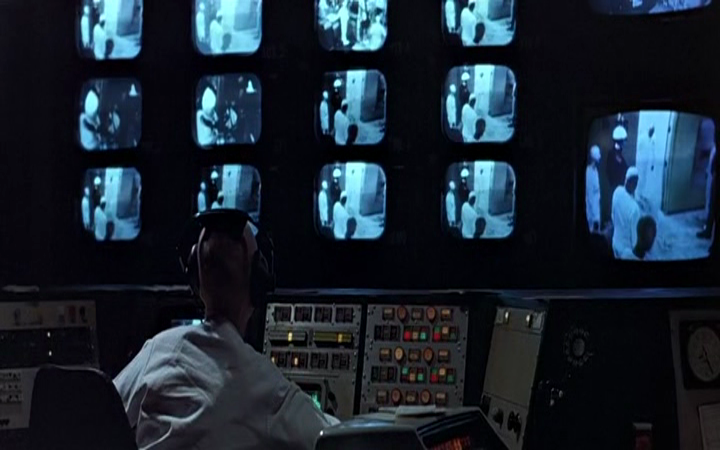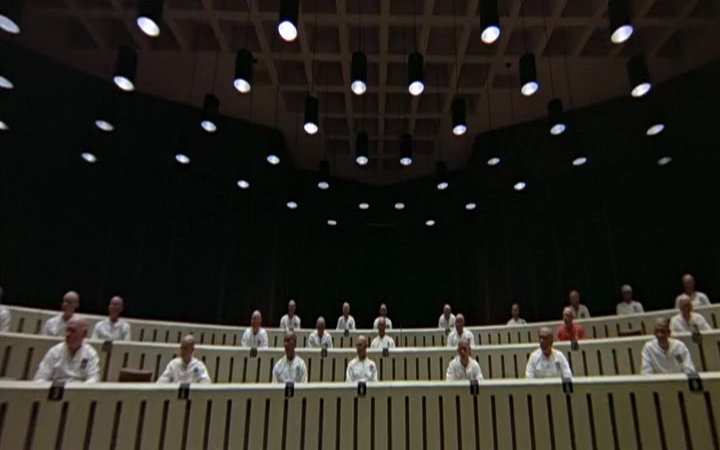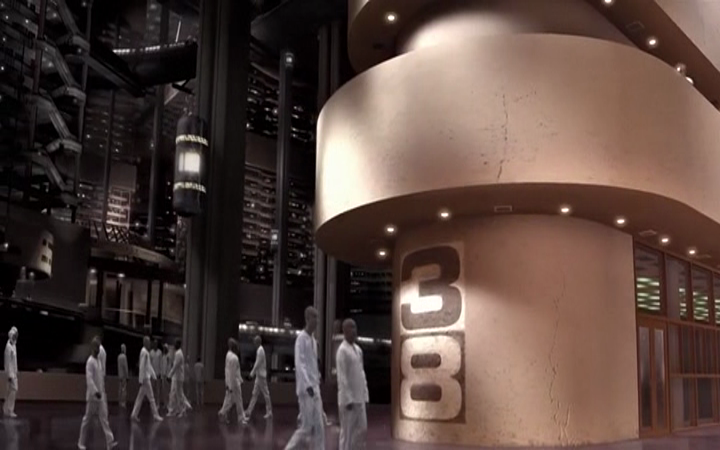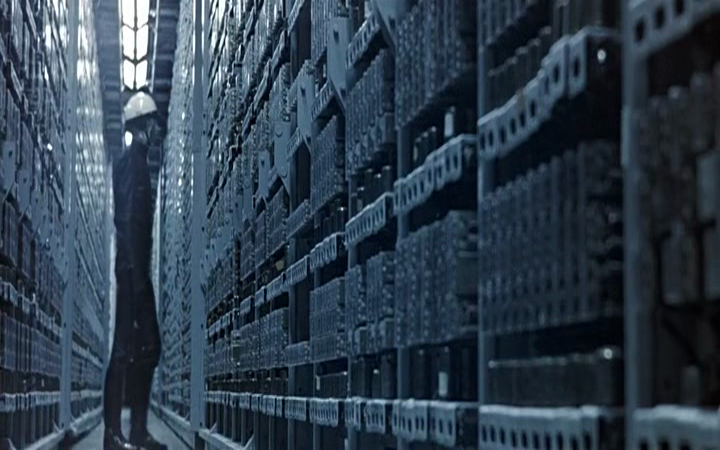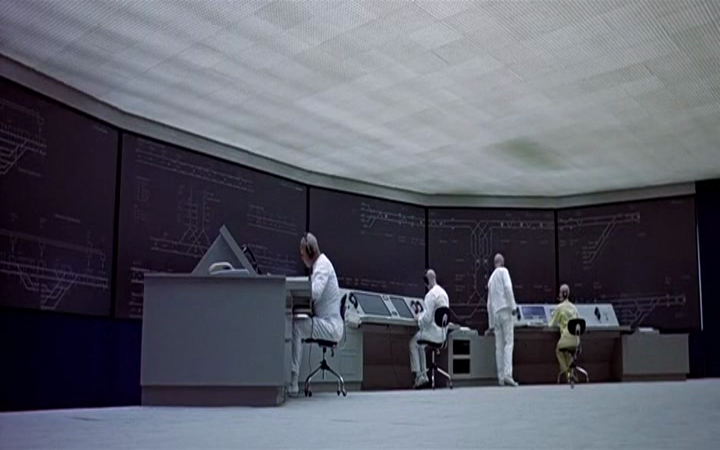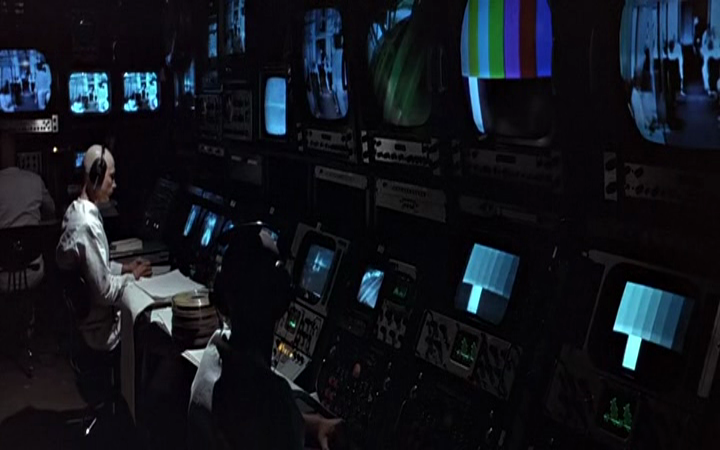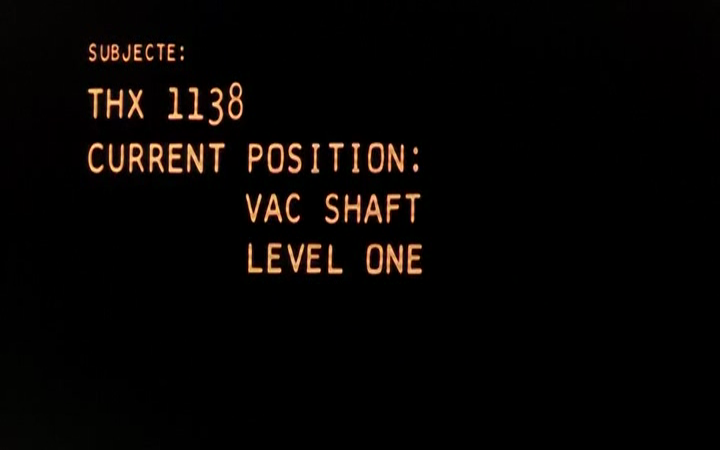-
#15 – Things to Come (1936)
Things To Come (1936)
Film review #15
Director: William Cameron Menzies
A look at just what the future could hold in the next 100 years…
Christmas 1940: In Everytown, John Cabal finds it hard to celebrate because he fears impending war. His feelings are shared by his friend Dr. Harding, but their optimistic friend Passworthy insists that war will advance technological progress if it does happen. Their fears are confirmed later that night when a bombing raid on the town triggers global war. Cabal becomes a pilot and some time later, shoots down en enemy bi-plane. When landing, he pulls the injured enemy pilot from the wreckage, and reflects on the whole madness of war. A little girl runs up to them, closely followed by a poisonous gas cloud. Cabal puts on his gas mask, and the enemy pilot gives his to the girl. Cabal gives the pilot his pistol as he and the girl run, and the pilot shoots himself. The war rages on for over 25 years, resulting in the almost complete collapse of civilisation, with technology being exhausted from fighting and plunging the world into a new Dark Age. With the last few planes, the enemy spreads a disease which becomes known as the “wandering sickness”, of which there is no technology with which to develop a cure.
May Day 1970: In the ruins of Everytown, a man known as The Chief declares he has ridden the world of wandering sickness by shooting everyone who was infected. He still however, wishes to wage war, trying to defeat the “hill people” so he can gain control of the mines and their oil, which he wants to use to power his planes. When a futuristic plane lands outside town, John Cabal emerges and declares himself a part of the new civilisation “Wings Over The World”, based in Basra, Iraq. He says the new world order made of the surviving engineers and mechanics has eradicated war, and abolished independent nations. The Chief refuses to listen to him, and has him locked up. Gordon, a mechanic who The Chief has been ordered to fix the pre-war planes he has, wants to help Cabal, and with the help of Cabal’s old friend, Dr. Harding, fixes a plane and flies to the Wings Of The World headquarters to warn them of Cabal’s imprisonment. They mobilise a fleet, and uses their “peace gas”, drop it on the town and render the population unconscious, and killing The Chief, signalling the end of the old ways of war.
1936: Everytown, and the world is now a futuristic utopia, in which everyone works together for scientific progress and achievement, however a sculptor by the name of Theotocopulos is not content with society, he says man needs a “rest” from the rush of technological progress, with mankind about to take its first manned flight around the moon. Cabal’s great grandson Oswald Cabal is now head of the governing council. His daughter Catherine and her boyfriend Horrie Passworthy insist on being the ones to fly the spaceship. When Theotocopulos rallies a mob to attack the “space gun”, the symbol of the technological progress, Cabal launches the ship ahead of schedule, as the mob descends on the space gun. The movie ends with Cabal reflecting on the nature of progress and what part humanity plays in the quest for knowledge:
“Rest enough for the individual man. Too much of it and too soon, and we call it death. But for MAN no rest and no ending. He must go on–conquest beyond conquest. This little planet and its winds and ways, and all the laws of mind and matter that restrain him. Then the planets about him, and at last out across immensity to the stars. And when he has conquered all the deeps of space and all the mysteries of time–still he will be beginning.”
…
“If we are no more than animals–we must snatch atour little scraps of happiness and live and suffer and pass, mattering no more–than all the other animals do–or have done.” (He points out at the stars.) “It is that–or this? All the universe–or nothingness…. Which shall it be, Passworthy? Which shall it be?”
This film was written by famed Sci-fi screenwriter H.G.Wells (War of the Worlds), and it does what science-fiction does best: Imagines the future, and considers the philosophical implications of said future.
But just how accurate was H.G.Wells’ prediction? Well first of all, most ominously, he predicted the outbreak of a second world war only sixteen months from when it actually happened. The accuracy of which he predicted the use of aeroplanes and bombing raids is also rather eerie. The nationality of the enemy fighters is never mentioned, but it does not take much imagination to say they are German. Luckily, the Second World War only lasted six years rather than the imagined 26 years in the film, and we managed to avoid plunging the world into another Dark Age. Perhaps because of this, we were able to land on the moon a lot earlier than 2036 (1969).
A lot of questions are raised in the film about the relationship between humanity and science: Is there a balance between science and humanism? Mankind must continue to build its knowledge and broaden its horizons, even if there is no limit to what may be learned. So how are we still able to retain our humanity in the face of the overwhelming face of progress? Is war a part of being human itself? These are all questions that still hold relevance today (and always will). The fact that an artist questions the society of 2036 is a point of interest. Is it the artists role to reinforce humanity and to address the problems of society?
The cinematic design of the movie is very well done for its time. The silhouettes of marching soldiers, air raids, and building montages that segue the different sections of the movie really set the mood of the movie and what is happening as the dates and years scroll by on the screen. The changing architecture of the fictional Everytown in Southern England where the town is set also allows the nature of time passing to be seen, from 1930s city, to post apocalyptic ruin, to future metropolis. The same town undergoes a radical transformation over the 100 years that the film depicts.
So in conclusion, Things To Come is an ominous look at the future as seen in 1936, from imagining WWII, to the recovery from the collapse of society from war, the question always remains of how humanity copes with progress and science, and just what being human means in the age of science.
-
#14 – The Death Ray (1925)
The Death Ray (1925)
Film review #14
Director: Lev Kuleshov
A Soviet sci-fi spy thriller from the 20’s packed with action…
In an unnamed “fascist” country, Tomas Lann is imprisoned at a “helium factory”, but manages to escape during a revolt. He flees to the home of Professor Podobed, where he wishes to get the “death ray” he has been working on to fight the fascists. However, one of the fascists, Father Revo, breaks into the Professor’s home and steals the death ray. Lann then chases down another one of the fascists named Fog in order to get the death ray back.
First, I should note that there is no English translation for this film, so my understanding of the movie is a bit limited, and as you can see from the stills above, the only surviving copy of the film is a bit poor in quality. Nevertheless, ever since I heard about this movie, I’ve wanted to watch it. Apparently, there are portions of the movie missing as well, which makes it even harder to understand the narrative.
This movie offers a different take on filmmaking in the 1920s. Before even Metropolis was released, The Death Ray (Luch Smerti in Russian) was released in the USSR, a film by “popular” Soviet filmmaker Lev Kuleshov. Film making in the USSR at this time was tightly regulated by the government, and apparently this film was criticized greatly by them because of a lack of soviet propaganda, and it was too “American” in terms of its production, with a lot of focus on stunts and action.
On that subject, the sheer amount of action in this movie is insane. The actors are jumping from 3-story buildings, hanging from wires suspended on rooftops, crashing through tables and doors, jumping from moving cars, falling down stairs and even running towards oncoming trains and lying down on tracks in front of them, with the train changing tracks at the last second. Now, I’m pretty sure there were no stunt doubles in this movie (or at all back then), so these actors must have been made of strong stuff, and had no sense of fear when filming these sequences. The action takes place in car chases, bike chases, and even a plane sequence, all culminating in a gun/knife fight at the end. Perhaps one of the reasons it is hard to follow the plot is because there is a lot more emphasis on action.
Throughout the film, the so-called “facist nation” is labelled as the antagonist of the film, and although no actual name is given to it, the use of swastikas throughout the movie by them strongly indicates that it is probably Germany or a mid-Europe country. This of course, would serve the USSR regime of painting the Europeans as an enemy of the soviet union rather nicely. Obviously the nazi movement was still in its early stages in 1925, but clearly it was still something the USSR wasn’t very keen on. Looking back on it in the present, we can see this film in the wider context of soviet life, and how they perceived other countries. Another interesting aspect to this is the leader of the fascist nation: Father Revo, is seen as a religious leader. This again puts it in line with the soviet objective of eliminating religion, and portraying the antagonists as religious in this movie tows the USSR’s policy very well.
The film ends with Lann retrieving the death ray and using it on the enemy fighter planes, and finally liberating the prisoners of the factory where he first escaped. Though we never get a close look at the death ray (It is always locked up in a box), the idea of such a weapon being used to bring down the enemies of the USSR was a nice way to end a movie like this which was used as propaganda by the government.
Apparently this movie was also screened in America, though it is difficult to find where and when. I wonder what Americans thought of such a movie, riddled with the Hollywood action sequences and developed on the other side of the world? Either way, the death ray is a rare example of soviet cinema that may lack in plot, but more than makes up for it in terms of action.
-
#13 – Just Imagine! (1930)
Just imagine! (1930)
Film review #13
Director: David Butler
A science-fiction romantic comedy musical…Wait what?
In the year 1980 (fifty years in the future when this film was made), the world is a different place: People ride in planes around the cities, and can travel around the world in minutes. People also have government issued numbers instead of names, and the government decides who you can marry based on your success, which the basis for this movie.
J-21 is a pilot who wishes to marry LN-18, but MT-3 has also filed a request to marry her. A court rules that by law MT-3 gets to marry her, since he is the most successful man (Though it’s said he just published a paper his Father wrote before he died). LN-18 is unhappy with this arrangement, since she loves J-21 and she only accepted MT-3’s request for marriage on the behest of her Father. He is told he has an appeal in four months in which he will have a chance to win LN-18’s hand in marriage.
J-21’s roommate RT-42 is going with his girl D-6 to see an experiment where scientists are attempting to revive a man struck by lightning in 1930. J-21 tags along to the experiment, which is a success. The man, now revived, has nowhere to go, so J-21 invites him to stay with them. He picks himself a number: O-0, and so he is referred to as “Single O” from now on.
Single O is introduced to a world where babies are bought, and food and drink comes in pills. J-21 sneaks into LN-18′s apartment, but Single O’s drunken antics get him caught by MT-3 and he is thrown out. While walking round the city streets alone in sorrow, he is greeted by a man that offers him an opportunity. He takes J-21 to see the great inventor Z-4, who says he needs a pilot for his “space plane” to be the first person to go to Mars. J-21 is reluctant, but after Z-4 reminds him that this accomplishment would allow him to win his appeal in marriage to LN-18, he agrees to do it.
J-21 and RT-42 set off for Mars, and when they have launched, they find Single O has stowed away because he has nowhere else to go. The three of them arrive on Mars, and set about exploring. They stumble upon a Human-like tribe who communicate primarily through gesture. When the three heroes are captured by another tribe, they realise that everyone on Mars in born with a twin: One is good, and one is bad. They launch a daring escape and hurry to their ship before they miss their launch window. Back on Earth, J-21s appeal is starting, and he has not returned. D-6 tries to stall for time, while the three heroes arrive. He says he has been to Mars, and the judge requires proof, which Single O provides in the form of a captured evil twin from Mars. The judge rues in J-21s favour, and he and LN-18 are reunited and allowed to marry. Also, Single O is happily reunited with his son Axel, now an old man.
Now, when this film was released in 1930, the great depression was in full effect, and this film was intended as a pick-me-up for the public, hence the comedy musical elements. It provides an interesting perspective on the “future” of 1980, in which the speed of life develops even further, and becomes more automatised and regimented. Despite the clear control of the government in people’s lives, there is still an overall sense of optimism in the futuristic New York City. As I mentioned earlier, this is probably due to the film being a pick-me-up during the Great Depression, and I suppose this movie wanted to show that life would get better. The movie of course didn’t quite predict 1980 correctly, we don’t all have planes and roads in the sky, or buy babies from the government. But it is an imaginative view of 1980 regardless.
The production and effects in Just imagine are quite impressive for their time. It was one of the first films to use large-scale rear-screen-projection. All the skyline shots of New York City are done this way, and it very well done. The beginning sequence in the sky as well is put together nicely. Bits of technology such as the view-screen phones are imaginatively presented. It’s all the little bits of technology that really hold the believability of the film intact. With all of this, the film was very expensive in its time to make, and achieved reasonable success at the box office. It’s a shame it isn’t well known because it seems to be a very landmark film in terms of its production (Maybe the fact it has never had a VHS or DVD release is part of that problem?). In the 1930s, where there was perhaps little appetite for science-fiction, integrating it with the comedy and musical genres was a smart idea to garner wider appeal.
Of course, when the film came out, humanity was nowhere near getting to Mars or even launching anyone into space, so I imagine there was very little to go on when they were designing the Mars set. Looking at it in retrospect, we can safely say that the Mars in Just imagine with it’s vast jungles and human population is nothing like the actual planet Mars with it’s barren red landscape and no trace of life to be found.
As is par with the science-fiction genre, addressing social issues such as feminism crops up throughout the film. While it seems that men still hold the most powerful positions (The judge, inventor and the various extras are all men), there are women, such as the census taker at the start of the film, that have full careers, which would probably have been quite controversial for its time.
So overall I found Just imagine to be a really fun watch, it gives us an interesting look at the issues surrounding the 1930s, and just what society at that time was like and what they saw in the future. The blending of so many genres might seem strange, but it has a lot of charm, and incorporates them all very well. It is a shame this film isn’t well known or recognised, because in terms of its ambition and production, it seems to be an important example of western film development, and I would highly recommend a watch.
-
#12 – THX-1138 (1971)
THX-1138 (1971)
Film review #12
Director: George Lucas
From the creator of Star Wars comes a science-fiction film exploring the darker side of the imagined utopia…
THX 1138 envisions a future where everything is automatised. It is a departure from the traditional utopian visions of American culture, such as Buck Rogers in the 25th Century, of which a clip is shown at the start of the movie. This is a very clever way of questioning our pre-conceived notions of the future.
The story centres around a man named THX 1138, who is a resident of a futuristic society, where the populace is forced to take drugs to suppress their emotions in favour of efficiency, productivity and order. THX unknowingly stops taking his drugs thanks to his roomate LUH, who he starts to have feelings and impulses for. He also meets SEN, who is able to hack into the mainframe of the city to get things he wants. After THX nearly causes a meltdown after not taking his drugs and therefore being unable to perform at his job, he is put on trial and sentenced to confinement. After which he tries to escape the city and find LUH.
I think the most important aspect of THX 1138 is how de-humanised everything is: Sterile white walls cover everything, the only colour being in the pills the citizens take. There are no personal effects, the living quarters are as empty as everywhere else, and everyone has a shaved head, so identity is suppressed at every level possible. This shows in the dialogue in the movie too, which is staggered, fragmented, and just plain unnatural. Even the police force which enforces the law is made entirely of robots: People building there own regulators and taking the notions of justice out of their own hands seems to show a system where technology has taken control. The film could perhaps be seen as a commentary on communism and the power of the state too?
Even the notion of religion is seen as controlled by the all powerful computer. OHM 1190 is the state-sanctioned religious icon, and booths are available around the city for the residents to talk to and confide in, to which OHM will occasionally spout computer generated phrases such as “Yes, I understand” or “Excellent”. These booths are adorned with an image of Jesus as depicted in Hans Meming’s painting Christ Giving His Blessing (1478), which further that notion of a religious icon. Though one has to wonder what use a religious icon is in a city where every aspect of humanity is suppressed? Perhaps its random computer generated responses are appropriate for a population without humanity, and it is another way for the state to spy on people…Being made in 1971, the movie still stand the test of time well, possibly because there is not much in the movie which can age. Everything is neutral and bland by design, and so is resistant to ageing in the eyes of the movie-goer. Another reason for its lack of ageing may be the fact that I watched the directors cut, which has updated CGI and some re-filmed sequences, of which the director George Lucas is notorious for editing and touching up his old films (See the uproar over the constant remastering of Star Wars).
So overall, we have a very disturbing vision of society in the future in THX 1138, its strange, inhuman concepts address just what it means to be human amidst our technology, and whether that technology could ever control us? It seems to me that as a departure from the views of the future in American culture at that time, THX 1138 serves as a powerful alternate perspective on the future and still maintains that relevancy today.
